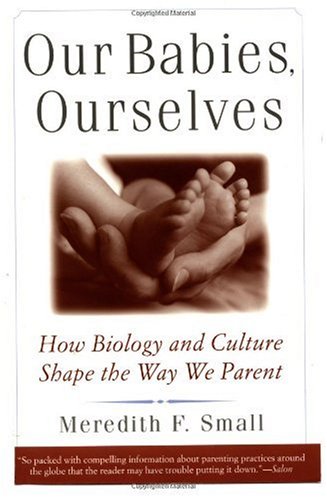Cross-Species Milk
Our notions of mother's milk come from what we see, and for most of us the milk we see is cow's milk, a brilliant white liquid. But milk from other species looks quite different—kangaroo milk, for example, is pink. But whatever the hue, breast milk is species-specific; that is, the composition is finely tuned to the particular growth and maturational needs and digestive system of the young of each species.^ ^ For example, cow's milk is higher in volatile fatty acids than human milk, and humans do not digest volatile fatty acid that well. So while cow's milk is easy for baby cows to digest, it causes intestinal gas in human babies. Cow's milk is also higher in iron than human milk, but the iron is a type that is not easily absorbed by the human digestive system. Because of this, human babies absorb more iron when they drink human breast milk than they do when they drink cow's milk, even though cow's milk contains comparatively more iron to begin with. Species-compatible milk is also easier to digest; it takes human infants twenty minutes to digest breast milk, and four hours to digest formula milk made from cow's milk. Human milk also contains about one hundred amino acids, vitamins, and minerals, including salts and sugars, in a recipe made specifically for the needs of human infants.
Milk composition also offers clues to the intensity and style of species-specific maternal behavior. In species where mothers are expected to feed only occasionally and leave babies in a nest for long periods, the milk is high in fat and protein so that infants can be both nutritionally compensated (by protein) and satisfied (with fat) for long periods alone. When the milk is low in fat and protein, as it is in humans, it is an indication that breast-feeding is designated or intended to be more continuous.^^ Human milk is 88 percent water and 4.5 percent fat on average, depending on the style of feeding; interval feeding with long spaces in between produces lower-fat milk, while continuous feeding produces higher-fat milk. In contrast, for example, seal milk is made up of 54 percent fat, which is an extremely high fat content. Predictably, baby seals feed in long intervals; they also need high fat to grow thick layers of body fat to keep warm in a cold aquatic environment.
Notes:
A comparison of the milk produced by females of various species, its nutritional content, and what that tells us about their lifestyle.
Folksonomies: evolution breastfeeding breast milk
Taxonomies:
/family and parenting/babies and toddlers (0.473377)
/food and drink (0.248810)
/food and drink/food/grains and pasta (0.193547)
Keywords:
milk (0.953119 (positive:0.024231)), human milk (0.837913 (positive:0.023505)), breast milk (0.794882 (neutral:0.000000)), human breast milk (0.691421 (neutral:0.000000)), continuous.^^ Human milk (0.662221 (negative:-0.349788)), Species-compatible milk (0.615018 (positive:0.275194)), formula milk (0.611925 (negative:-0.306742)), Milk composition (0.602792 (positive:0.470478)), seal milk (0.602338 (negative:-0.412978)), lower-fat milk (0.591788 (neutral:0.000000)), higher-fat milk (0.591276 (neutral:0.000000)), cow (0.495550 (positive:0.080362)), brilliant white liquid (0.481387 (positive:0.720503)), high fat content (0.478724 (neutral:0.000000)), volatile fatty acids (0.477956 (positive:0.359730)), volatile fatty acid (0.475011 (neutral:0.000000)), species-specific maternal behavior (0.463557 (positive:0.470478)), human babies (0.461932 (neutral:0.000000)), human infants (0.457990 (positive:0.259981)), cold aquatic environment (0.449463 (neutral:0.000000)), long periods (0.437685 (negative:-0.322816)), various species (0.397613 (neutral:0.000000)), nutritional content (0.396468 (neutral:0.000000)), intestinal gas (0.393817 (neutral:0.000000)), particular growth (0.393576 (positive:0.547833)), maturational needs (0.389775 (positive:0.547833)), comparatively more iron (0.389208 (neutral:0.000000)), percent water (0.388900 (negative:-0.349788)), amino acids (0.388402 (neutral:0.000000)), baby cows (0.388305 (positive:0.377254))
Entities:
fatty acids:FieldTerminology (0.886630 (positive:0.359730)), twenty minutes:Quantity (0.886630 (neutral:0.000000)), 4.5 percent:Quantity (0.886630 (neutral:0.000000)), 54 percent:Quantity (0.886630 (neutral:0.000000)), 88 percent:Quantity (0.886630 (neutral:0.000000)), four hours:Quantity (0.886630 (neutral:0.000000))
Concepts:
Nutrition (0.949527): dbpedia | freebase | opencyc
Milk (0.849760): dbpedia | freebase | opencyc
Breast milk (0.688300): dbpedia | yago
Digestion (0.644502): dbpedia | freebase
Breastfeeding (0.575903): dbpedia | freebase | yago
Infant (0.540148): dbpedia | freebase | opencyc
Fat (0.465730): dbpedia | freebase | opencyc
Metabolism (0.449360): dbpedia | freebase





